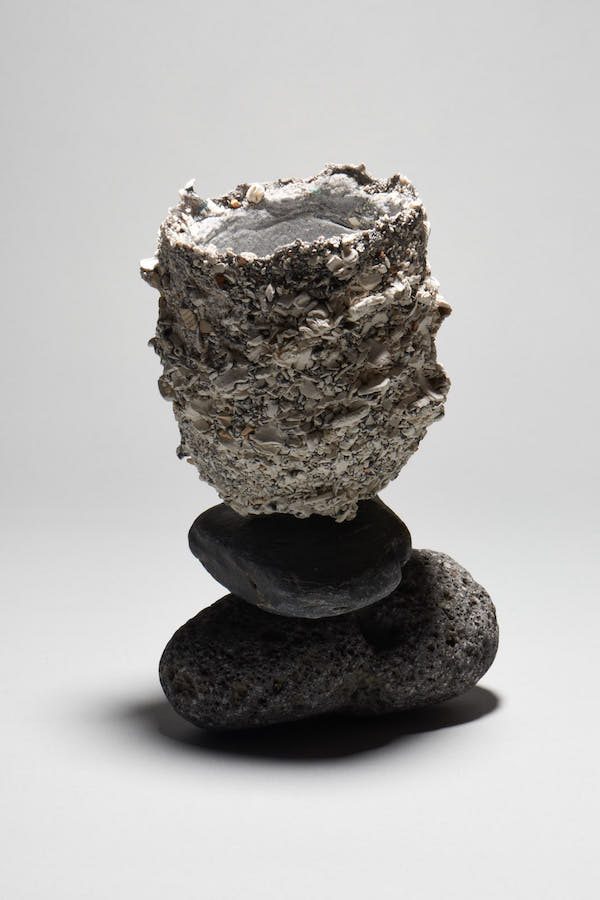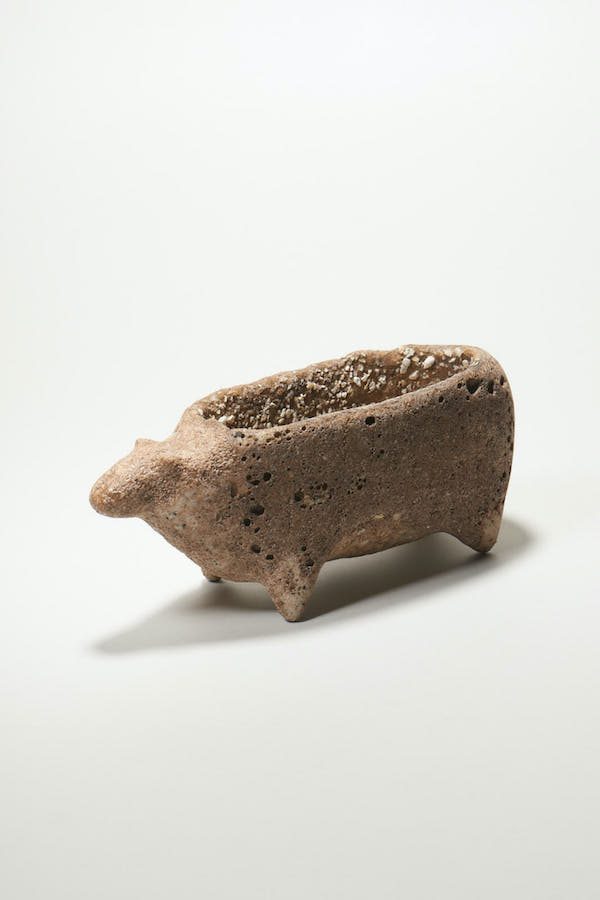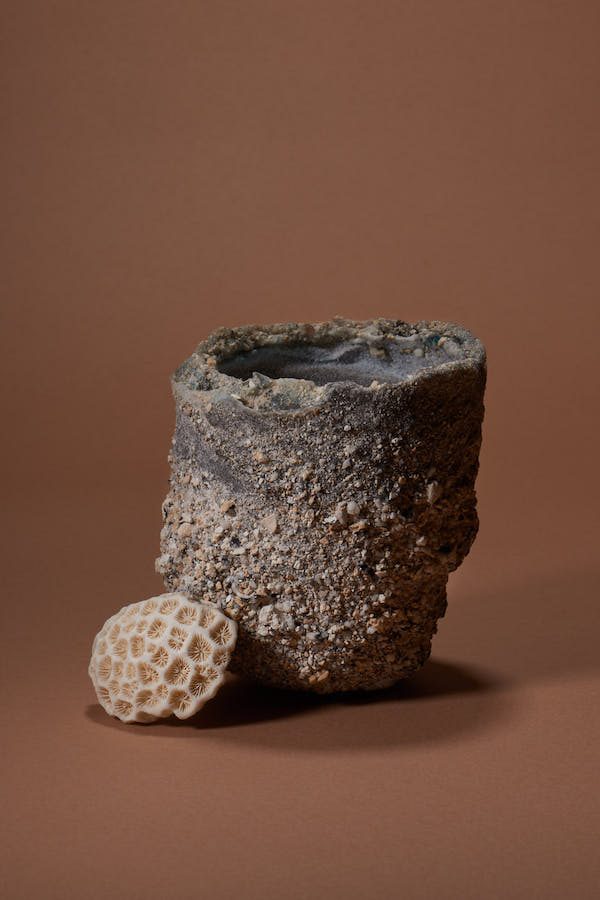Masaomi Yasunaga produces “ceramics” with glaze (glass). He presents the diversity of “ceramics” by removing the main material “clay”.
Yasunaga studied ceramics under Satoru Hoshino, a second-generation proponent of the avant-garde ceramic group, Sodeisha (in kanji, 走泥社 literally means, crawling through the mud). Founded in Kyoto in 1948, in the aftermath of WWII, Sodeisha broke away from long-established conventions of Japanese ceramics, resolving to create non-functional sculptural works.
Continuing with this ethos, Yasunaga developed idea of “ceramics” focusing on using his physical body as unlimited unconscious intelligence, , and explore an possibility of functional and fine arts.
[ Biography ]
Born in Osaka Prefecture in 1982. Lives & works in Iga-shi, Mie Prefecture. While at University, Yasunaga established his creative direction at the laboratory of Satoru Hoshino, a coterie of the avant-garde ceramic group “Sodeisha”. While pottery is often made of clay and baked in a kiln, Yasunaga takes the form of pottery using glaze for his creations instead. Yasunaga masters creativity by combining unique raw materials such as feldspars, glass and metal powders, with his own methods such as creating glazed vessels with increased viscosity which are then pit fired in sand.
1982 Born in Osaka
1988 Moves to Nabari, Mie Prefecture
2000 Admission to the Osaka Sangyo University Department of Environmental Design
2003 Start a pottery to enter the Satoru Hoshino laboratory
2006 Receives Masters Degree in Environmental Design from Osaka Sangyo University
2007 Establishes a pottery studio in Iga
2010 Becomes a creative resident at The Shigaraki Ceramic Cultural Park
2011 Newly builds a firewood kiln
2013 Becomes a creative resident at ARCTICLAY 3rd SYMPOSIUM in Posio, Finland
2014 Becomes a creative resident at National Tainan University of the Arts
[ Selected Solo Exhibitions ]
2019 “Masaomi Yasunaga Exhibition”, Nonaka-Hill gallery, LA, US
“Masaomi Yasunaga Exhibition”, Gallery Utsuwakan, Kyoto, JP
“物空 Things Empty”, 一票票 Piao Piao Gallery, Taipei, Taiwan
2018 “Memory of Orient”, Gallery Utsuwa Note, Kawagoe, Saitama, JP
2017 “Masaomi Yasunaga Exhibition”, Garb Domingo, Okinawa, JP
“arid landscapes”, pragmata, Tokyo, JP
“Ceramics of Masaomi Yasunaga”, Utsuwa Kyoto Yamahon, Kyoto, JP
“Masaomi Yasunaga Exhibition”, Gallery uchiumi, Tokyo, JP
2016 “Ceramics of Masaomi Yasunaga”, Utsuwa Kyoto Yamahon, Kyoto, JP
“Masaomi Yasunaga: Ceramics”, Art Salon Yamagi, Osaka, JP
2015 “Ceramics of Masaomi Yasunaga”, Utsuwa Kyoto Yamahon, Kyoto, JP
“Masaomi Yasunaga: Ceramics”, Art Salon Yamagi, Osaka, JP
“Masaomi Yasunaga Exhibition: Production at Yaso and Daily Work”, wad, Osaka, JP
“Masaomi Yasunaga Exhibition”, Gallery uchiumi, Tokyo, JP
“Masaomi Yasunaga Exhibition”, Gallery Utsuwakan, Kyoto, JP
2014 “Masaomi Ysunaga: Pottery Trilogy”, Gallery Yamahon, Mie Prefecture, JP
“Masaomi Yasunaga: Ceramics”, Art Salon Yamagi, Osaka, JP
“sand dunes, pragmata”, Tokyo, JP
“Hollow”, Pioa Piao Gallery, Taipei, Taiwan
“The corpse”, National Tainan University of the Arts, Tainan, Taiwan
2013 “Ceramics of Masaomi Yasunaga”, Utsuwa Kyoto Yamahon, Kyoto, JP
“Masaomi Yasunaga: Pottery Exhibition
– Yakimono Biyori”, TRI Gallery Ochanomizu, Tokyo, JP
“Masaomi Yasunaga: Ceramics”, Art Salon Yamagi, Osaka, JP
“Masaomi Yasunaga Pottery Exhibition
– Work by sand mold, and then”, Gallery uchiumi, Tokyo, JP





